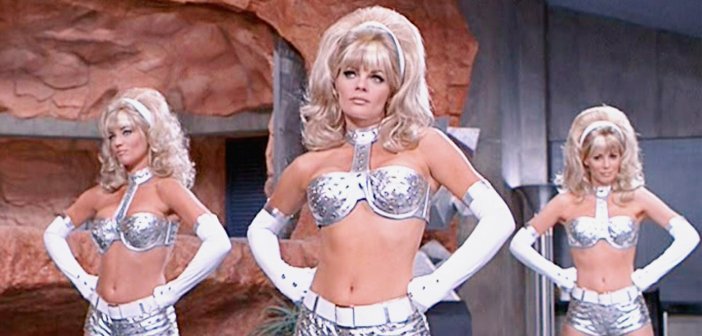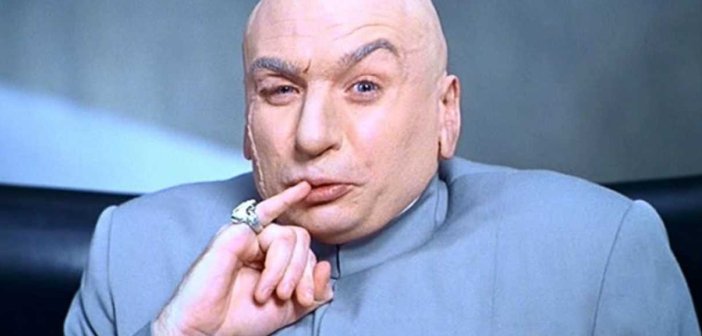Oh Behave! | A Bond Geek Evaluates Austin Powers 20 Years On
They say the best parodies come from a place a true affection, that you can only scathingly send something up if you have real investment in it to start with. This was definitely the case with Austin Powers as Bond had in many ways already become a parody of itself. Apart from the eventual time travel, there’s very little in any of the ‘Powers’ films that wasn’t already in Bond – even the Fem-Bots were meant to have been in one, if the rumours of the unproduced third Dalton movie are true – so finding new levels to make fun of it with, took intimate fan knowledge. The really impressive thing about Austin Powers though is that it was just damn funny too. It would be all well and good making a clever non-Bond, packed with winks and nods to the various anorak-wearing obsessives in the crowd but a box-office success that alone would not make. No, the film managed to play well as a broad comedy to a general audience, a clever genre spoof to cinephiles and a well-intentioned piss-taker to the Bond fans. However, as I count myself among those aforementioned anorak-wearing Bond geeks, let’s focus on that third one for now.

One of the more impressive elements of the film are the aesthetics and production design which, despite being a hugely faithful recreation of Ken Adam’s seminal work on the early Bonds, are an odd example of the imitation in many ways overshadowing the original. The interior of Doctor Evil’s lair bears the hallmarks of the likes of the You Only Live Twice volcano base but the aesthetic has arguably become more synonymous with this franchise than its progenitor. The Bond films can’t touch that look anymore because it’s no longer theirs, the only film to use it recently was Kingsman – itself a piss-take of Bond (albeit with a somewhat straighter, more violent face than Powers) – and even there, the use of the hollowed-out mountain base felt more like a knowingly Powers -infused signifier of the heightened reality of that film than as a recreation of Bond. This extends to the costuming. While our title character gets away with a truly ostentatious getup only briefly worn by Lazenby’s Bond – but now more iconically recognised for Powers – and a bemusingly faithful recreation of Connery’s chest hair, it is of course the villain that hijacked a formally inseparable piece of Bond iconography.
One has to wonder what the Bond franchise would have done in a post-Austin Powers world if copyright shenanigans hadn’t precluded their use of Blofeld until 2015’s Spectre. As a parody, Doctor Evil is such a pitch-perfect comedic evisceration of Bond’s one time arch-nemesis and Donald Pleasence’s performance of the character in particular. He’s also by far the most enduring element of the Powers franchise both visually and from a pop culture standpoint. The grey Nehru suit, bald head and scar continue to be an easy reference costume come Halloween and even when Daniel Craig eventually had to face his own Blofeld, they wisely made his Nehru jacket a different colour and had it worn more casually. (For all the good it did given that they: contrived the scar’s inclusion, needlessly and pointlessly briefly featured a white cat, and made Blofeld Bond’s canonical half-brother thus inadvertently legitimatising a plot point from a later Austin Powers film that was meant to be a stupid and contrived jab at lazy stakes-raising of that exact nature.)

In a broader cultural sense, Doctor Evil remains a popular and insidiously ingrained go-to for people of a certain age and likely even a few who’ve never seen the film. The raising of a pinky finger to one’s mouth has endured as a signifier of mischievousness while those memes that the kids like to throw at each other – or whatever it is they do for kicks these days – still regularly feature the popular “air quotes” moment and from time to time Mike Myers’ particular enunciation of the phrase “One Million Dollars”. In fact, the proliferation of meme and video-based humour has fragmented the “mainstream” comedy culture to a point that we’re unlikely to see many or indeed any future movie achieve the level of ingrained familiarity this film did. Aside from perhaps Anchorman, this may be the last hugely popular, mainstream spoof film and certainly the most fourth-wall-breaking a (widely released) film indulged in until Deadpool came along.
From a modern culture standpoint, a good sign of immortality in the subconscious is that – in the case of a film – a moment/image has become a widely recognised and frequently used meme. An even higher form of praise is if said meme is still being used in the original context it was intended. This is true of Austin Powers. No one’s going to try and argue that it revolutionised a genre the way a landmark spoof like This is Spinal Tap did but it nonetheless succeeded in crafting an incredibly solid comedy which remains funny to this day with a particular sense of humour that’s aged impressively well.
Author Richard Drumm is the host of the James Bond themed podcast Quantum of Friendship which you can listen to here.
Featured Image Credit

